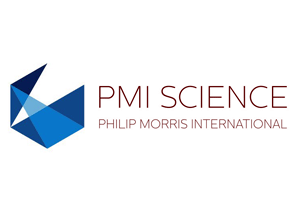More evidence on vapor

New data presented at the Society of Toxicology Annual Meeting (SOT) have demonstrated the potential risk reduction offered by switching from conventional cigarettes to two different heat-not-burn tobacco products and e-cigarettes.
A PMI Science press note issued on Wednesday said that a range of studies had investigated the toxicological impact of Philip Morris International’s Tobacco Heating System 2.2 (THS 2.2), Carbon Heated Tobacco Product 1.2 (CHTP 1.2) and prototype e-cigarette products in the context of respiratory disease, cardiovascular disease, and lung cancer using several different approaches. In each case, the aerosols produced by the alternative products were said to have resulted in significantly reduced levels of biological impact as compared to cigarette smoke (CS).
‘One six-month, multi-arm exposure study compared the effects of CS with those of the aerosol from the two heat-not-burn tobacco products THS 2.2 and CHTP 1.2 using a mouse model,’ the note said. ‘In both THS 2.2 and CHTP 1.2, tobacco is heated rather than burned, resulting in significantly reduced levels of harmful chemicals emitted and inhaled as compared with CS,’ the note said.
‘Through a systems toxicology approach, combining physiological, histological, and omics [various biology disciplines] endpoints, the study found that exposure to THS 2.2 and CHTP 1.2 aerosols had minimal adverse respiratory and cardiovascular effects in comparison to exposure to CS. The findings are in line with a previous assessment of THS 2.2, demonstrating reproducibility of the results obtained. In addition, both cessation and switching to CHTP 1.2 aerosol exposure after three months exposure to CS reversed inflammatory lung responses, halted the progression of aortic plaque growth and reduced the perturbations of biological pathways in heart tissue, to levels typically seen following exposure to fresh air alone.’
PMI Science said that another study presented at SOT had assessed lung inflammation, emphysema and the underlying molecular changes typically associated with lung cancer following up to 18 months of exposure to either CS or THS 2.2 aerosol. ‘The study used a combination of traditional toxicology endpoints as well as systems toxicology techniques including histological, transcriptomic, and proteomic analysis of the lungs,’ the note said. ‘In all endpoints, the biological impact of THS 2.2 aerosol was significantly lower than that of CS.’
Meanwhile, the company said that, in line with the principles of 21st century toxicology, PMI was developing also novel in vitro methods for toxicity testing using human cells. ‘Such models have the potential to reduce the necessity for animal testing and offer more cost-efficient and timely results, as well as a detailed understanding of the biological processes underlying toxicity,’ it said.
‘In collaboration with the Institute for In Vitro Sciences (IIVS), one study presented at the SOT evaluated the performance and reproducibility of three new in vitro assays. Six laboratories conducted comparison of the assays and found that these non-animal test systems may provide consistent human-relevant data corresponding to key events involved in respiratory disease. A further in vitro methodology using human bronchial epithelial cells was used in a study assessing the effects of THS 2.2 aerosol and CS.’
“The multi-lab comparison of these non-animal systems paves the way for more robust and meaningful strategies for toxicity testing,” said Dr. Holger Behrsing, principal scientist, IIVS. “They allow us to generate human-relevant data that will be of interest not just to industry and research scientists, but also to regulatory bodies. In order to develop these assays and ensure they reach their fullest potential, collaboration is key. Working with PMI and a range of different laboratories has allowed us to leverage expertise across the field and demonstrate the reproducibility of our findings. In the spirit of open science, we hope that this will open the door to further collaborations in the investigation, development, and validation of novel in vitro systems.”
In the assessment of three prototype e-cigarettes, biological changes following three-week’s exposure to the either the e-cigarette aerosols or CS were assessed using traditional and systems toxicology endpoints. CS exposure was found to induce biological responses associated with smoking-related diseases in the respiratory tract, while e-cigarette aerosol exposures, even at higher levels of nicotine delivery, resulted in substantially reduced molecular and microscopic changes. Two additional e-cigarette studies assessed the biological effects of flavor compounds typically added to e-cigarette liquids, demonstrating the potential to establish a scientifically substantiated list of minimally-toxic flavor ingredients.
PMI said it was leading a full-scale effort to ensure that heat-not-burn tobacco products and e-cigarettes ultimately replaced cigarettes.
Further information on PMI’s Reduced-Risk Product development and assessment program can be found at www.pmiscience.com.